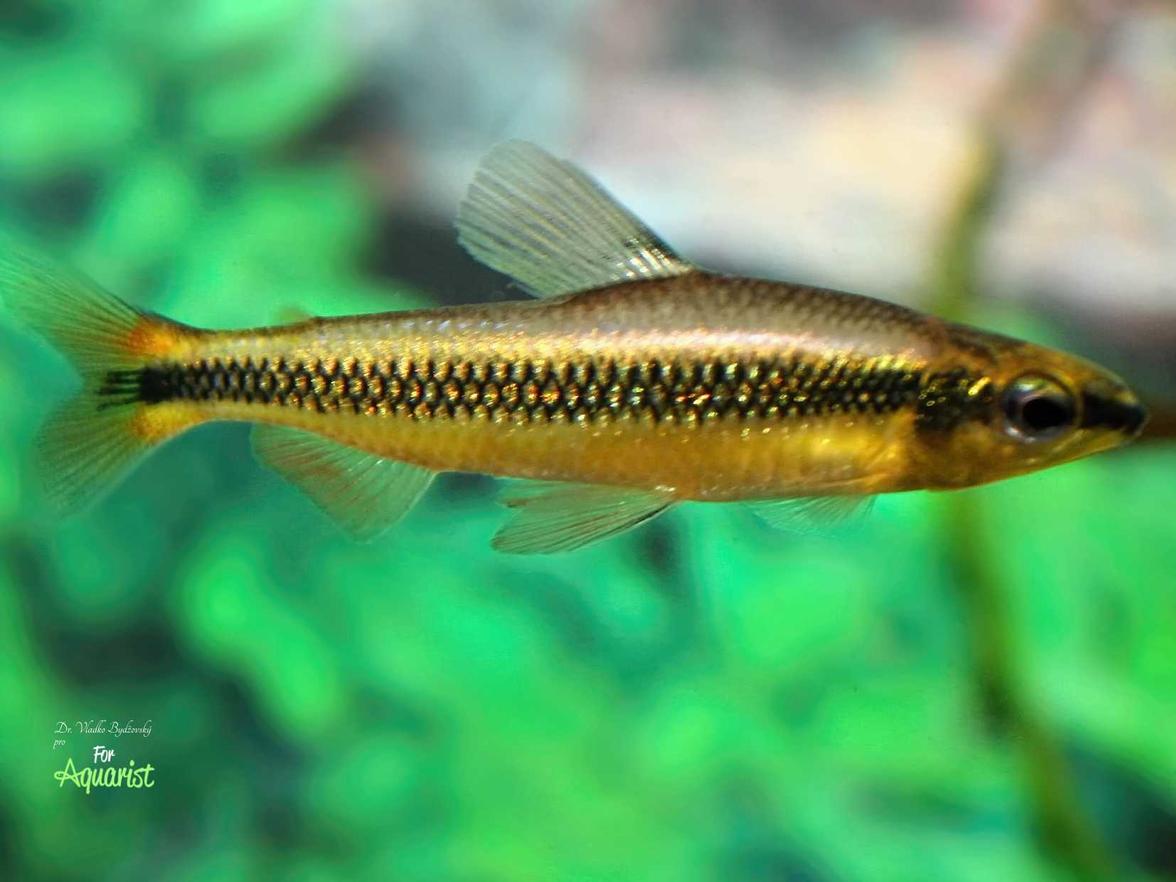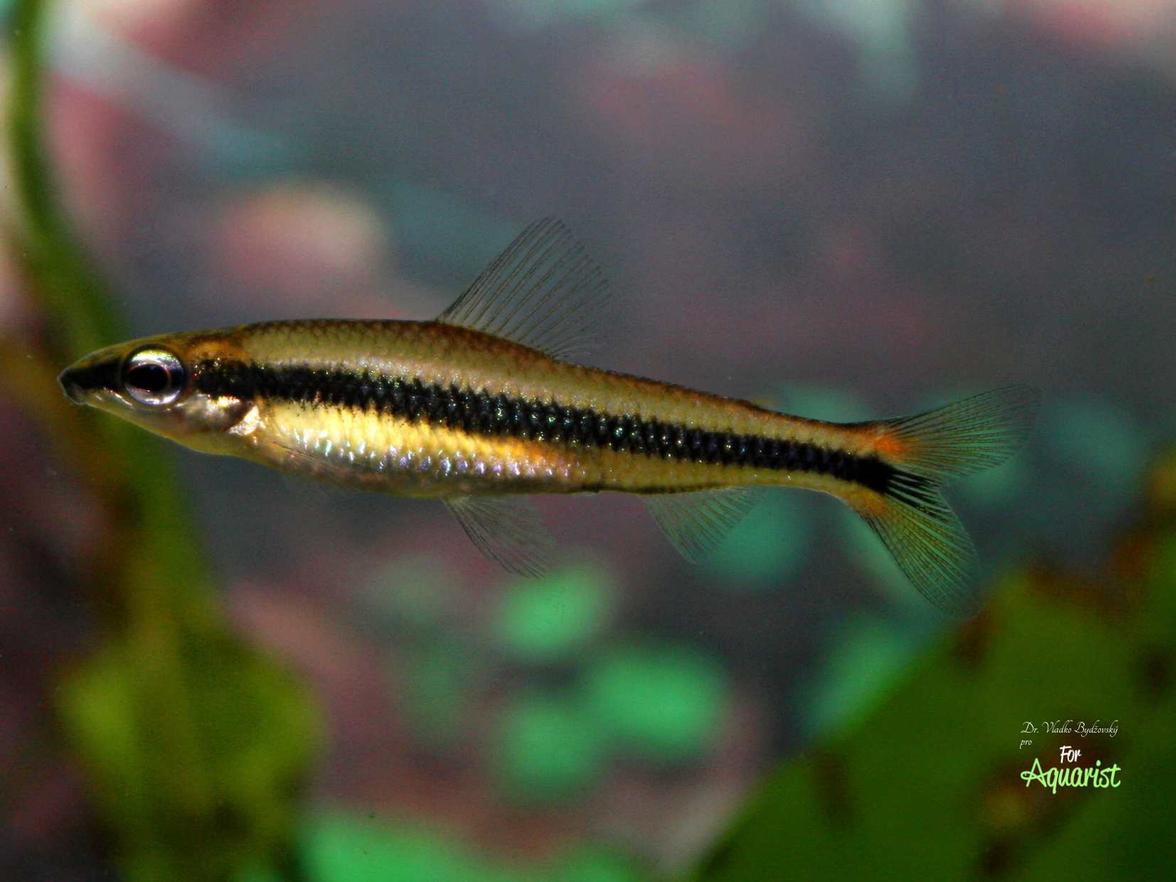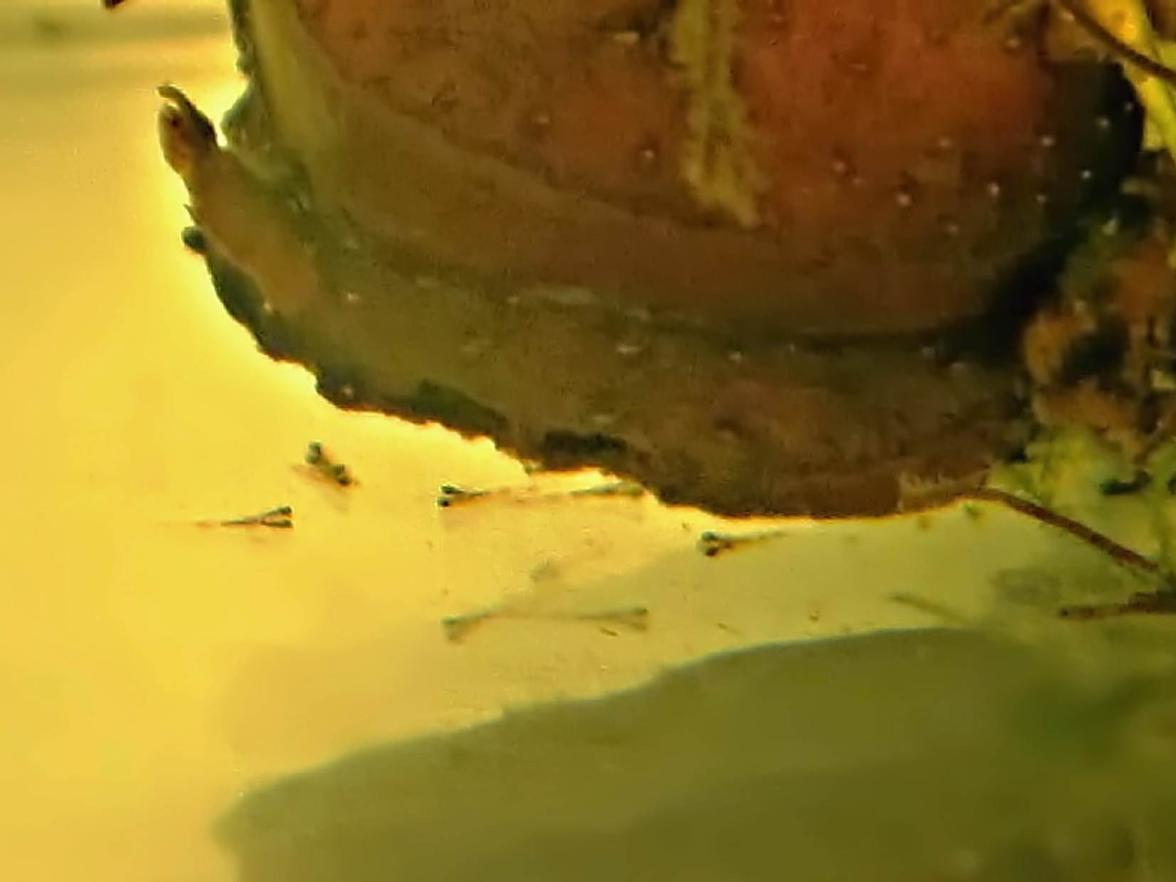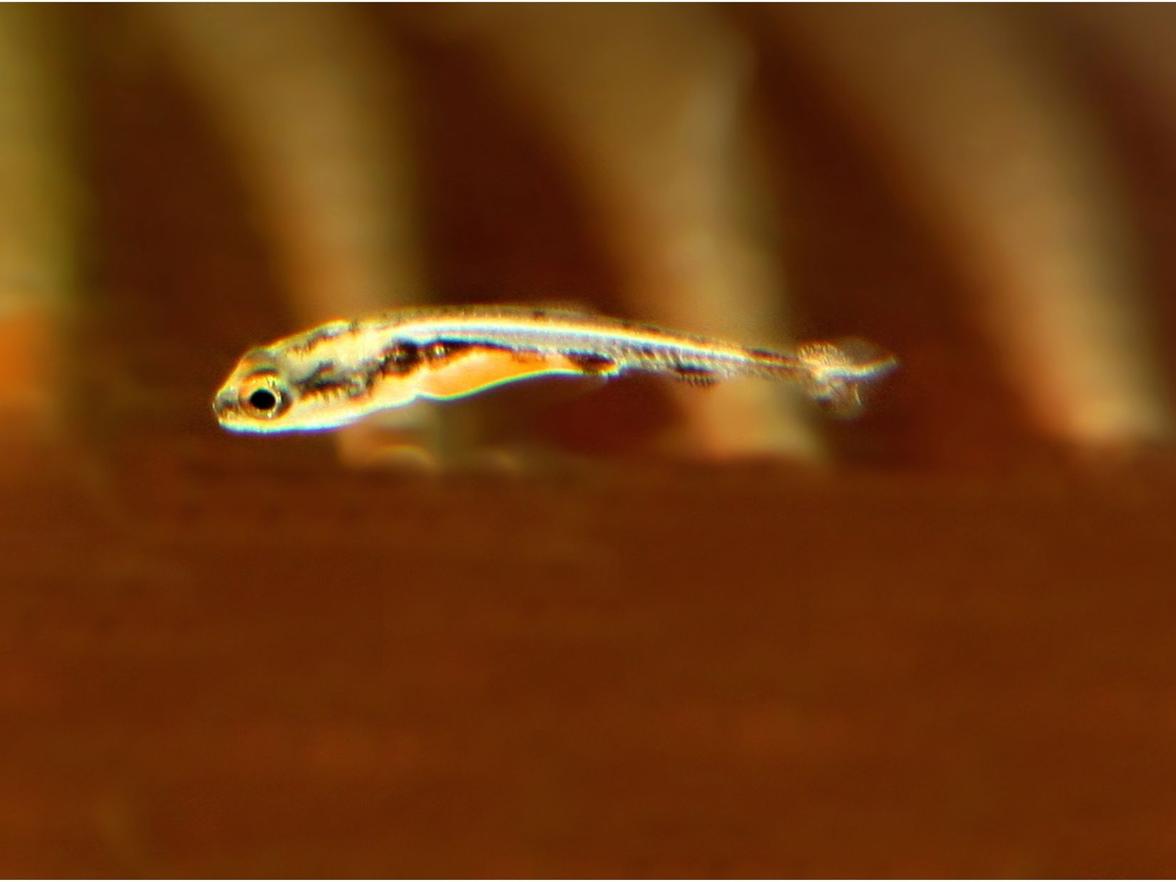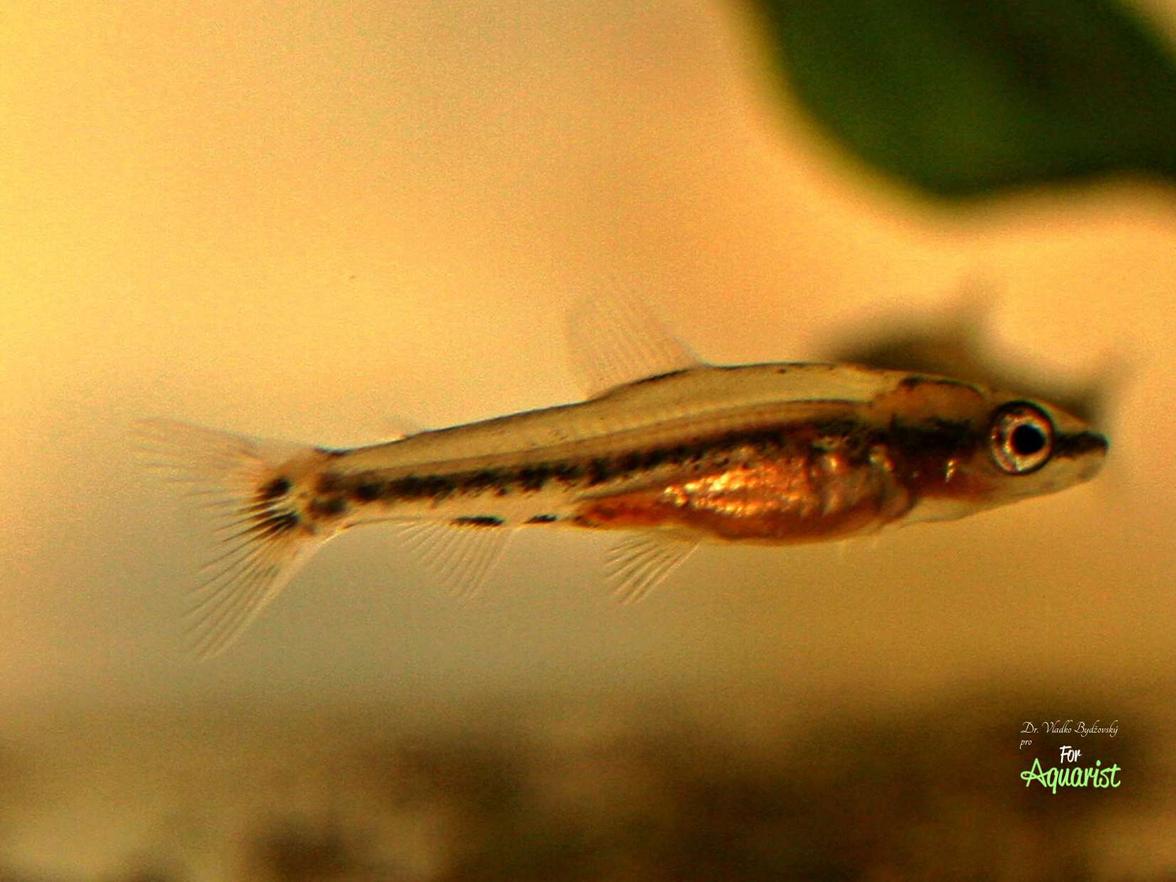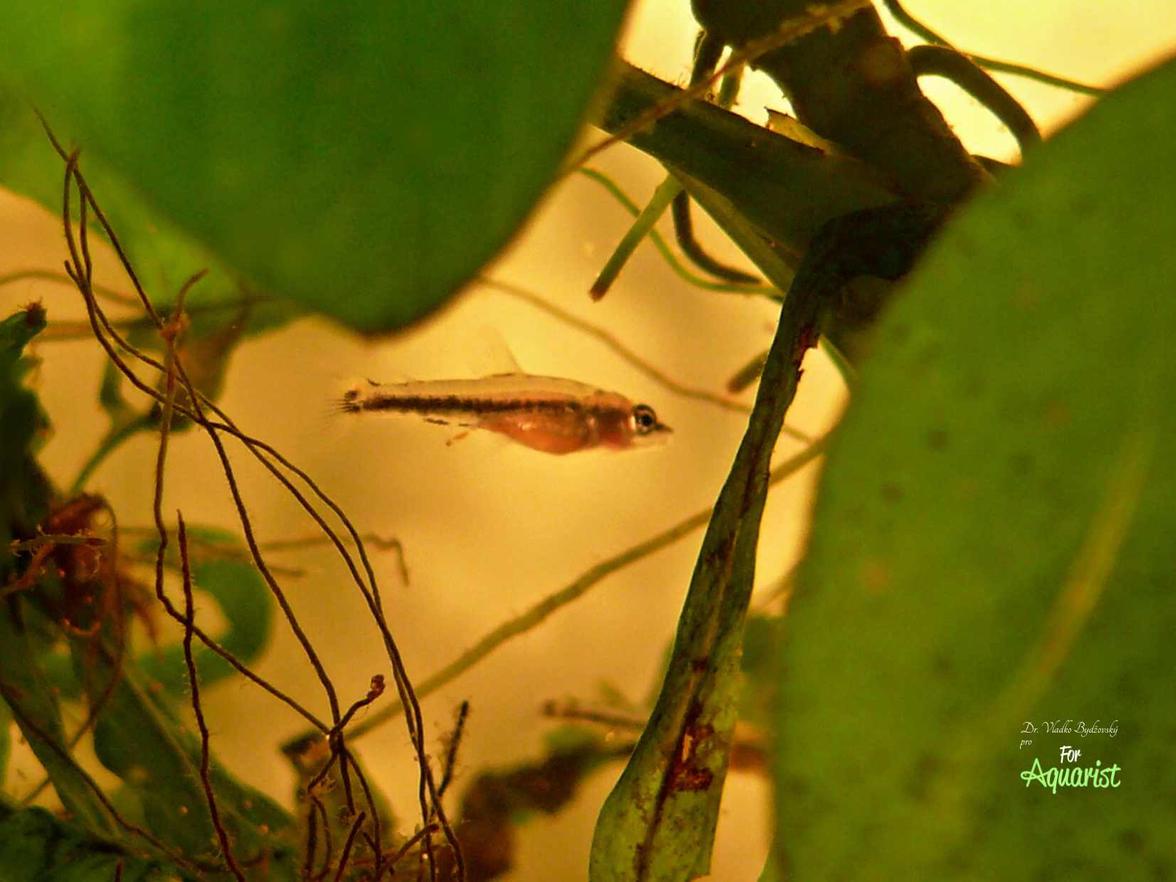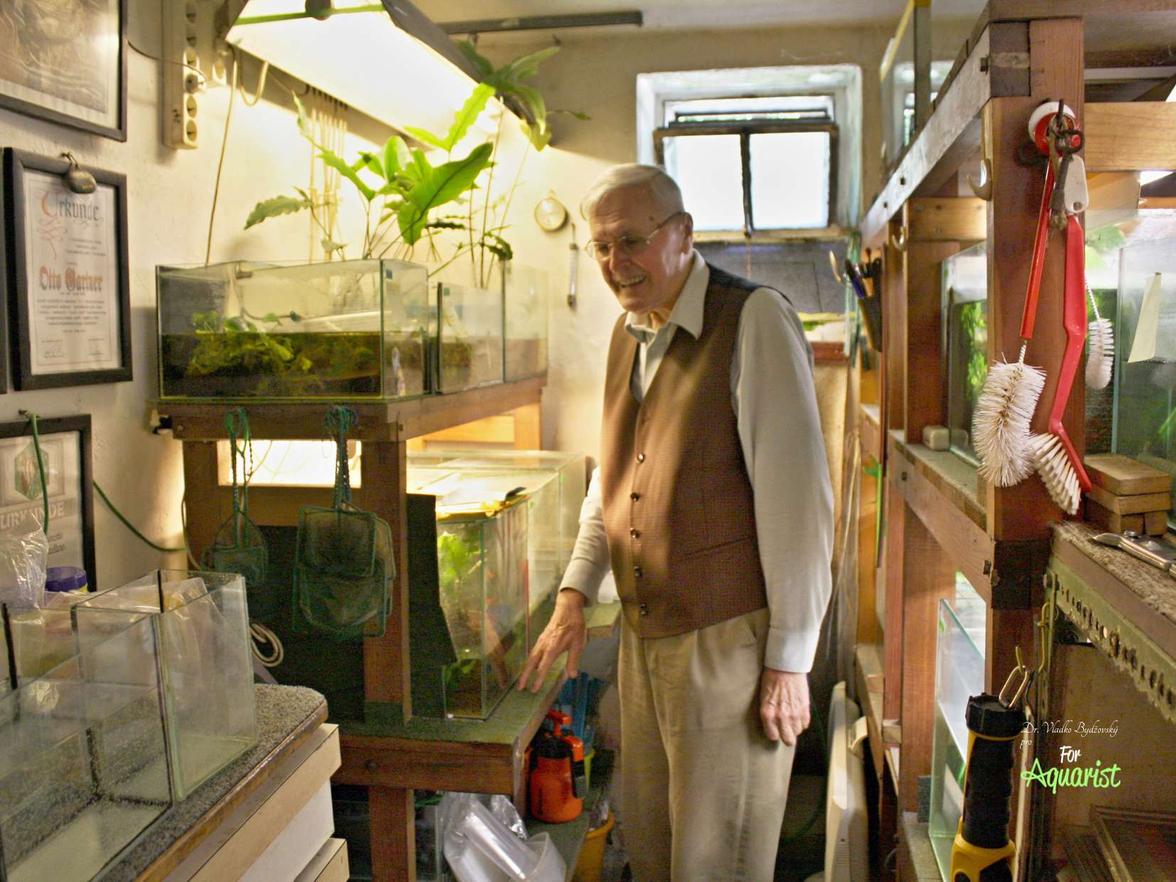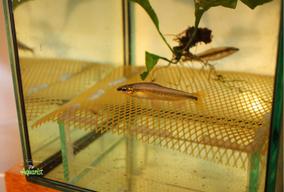The genus Nannocharax (Characiformes: Distichodontidae) represents a specific group of small tetras in African waters, which are still rather marginal in aquaristics. Nevertheless, these fish have attracted the attention of several prominent European breeders and have become the subject of long-term breeding interest. This text summarizes historical and current knowledge about their breeding, reproduction, and ecology in the wild.
African small fish of the genus Nannocharax are still considered a rarity; they reached us at the beginning of this century thanks to the kindness of Prof. Otto GARTNER, who donated 15 adult specimens from his breeding. He has been breeding these fish since 1985, when he received them from his friends. At that time, the well-known fishkeepers Eduard PŮRZL and O.HOFMANN were fishing in southern Gabon on the upper reaches of the Ngounié River, which flows into the Ogowe River near Lambarene. Thus, among other fish, they also caught these rare gems. The cooperation of aquarists knows no borders or limitations.
History of import and breeding in Europe
From the individuals brought in at that time, further breeding emerged. The young were transported to East German Weimar by the well-known Johann POSCH (1987) through the "iron curtain" to H. ENGELHARDT, who passed them on to the well-known specialist in catfish, Dr. H.J. FRANKE. He bred them, and from his breeding, the doyen of Czech aquaristics, Dr. Stanislav FRANK (1991), was able to gain experience with their breeding. However, he replaced the Latin name with Nannocharax latifasciatus, which was described in 1989. A year later, two employees of the Natural History Museum in Dražice (Dr. A. ZARSKE and K. GEIßLER) published their experiences as well.
Homeland and natural environment
Most of the currently known approximately 27 species of the genus Nannocharax (Characiformes, Distichodontidae) live in western, and less so in central Africa. Prof. GARTNER became famous for a series of trips to Africa, which he undertook with many prominent aquarists, such as Horst LINKE, Prof. Dr. Alfred RADDA, etc.
He was already here in 1972. He studied many locations of this African small fish. Our species comes from Gabon. About 18 km north of Akurén, he and Prof. Radda measured an air temperature of 33°C, a water temperature of 32°C, and conductivity of 275 µS/cm with a pH around 7. The waters were mostly rich, and the fish population, besides two species of Nannocharax (Nannocharax parvus and Nannocharax fasciatus) caught here included Brycinus longipinnis, two species of barbs, tilapia, two species of the genus Hemichromis, Nannaethiops unifasciatus, two species of headstanders Kribia kribensis and Kribia nana, Pantodon buchholzi, Epiplatys fasciatus, Aplocheilichthys macrophthalmus, and Procatopus aberrans.
Relationship of South American and African tetras
In earlier articles about African tetras, I mentioned this issue. Few people are aware of the close relationship between the African genus Nannocharax and the South American small fish of the genus Nannostomus, as well as the genus Characidium. All of them are mostly small tetras. They rarely reach 9 cm and have small mouths.
Breeding in the aquarium
African small fish have one fundamental disadvantage. They only accept live food. Therefore, after years, I resumed breeding daphnia and started going more often to ponds to catch plankton. I use daphnia and, in emergencies, artemia nauplii. Mosquito larvae or brine shrimp larvae are a real delicacy. For my 15 specimens, I arranged about a 60-liter tank with soft water from České Budějovice, with fine sand at the bottom. Good filtration, regular water changes, and a temperature around 24-25°C. The fish are very lively but still very shy. They tend to stay in the lower and middle parts of the aquarium.
Breeding
I have conducted spawning attempts with the fish repeatedly, but due to my work commitments, the fish always spawned at times when I was at work. Therefore, I utilize the experience of my long-time friend. In 1986, Prof. GARTNER described a previously unobserved spawning behavior, as follows.
Before the actual spawning occurs, the male swims around the female from behind. At this stage, the male has clearly visible courtship, a coal-black lateral stripe, and all fins, except for the pectoral fins, are blood-red, and the area around the abdominal region is reddish. At first, the female tries to escape, but after a while, near the spawning substrate, she stops and waits for the male. He positions himself parallel to her, then swims around her and, using his open gill covers, fixes the female's head. This fixation can occur from either the right or left side. Then, with quick movements, he turns to himself, and at this moment, the actual spawning occurs. The fish are then capable of repeating this procedure for several hours. The only thing that prolongs in this situation are the pauses, which moderately lengthen the duration of spawning uniformly.
For spawning, I mostly used a 5-liter spawning tank, similar to what I use for red neon and similar tetras. In these, the fish usually spawned by the 4th-5th day. If I used my favorite spawning tank measuring 30x30x15 cm, which I use for breeding imports, spawning followed the very next day after being placed in the tank. There were problems with the chemistry of the water; I tried various options.
Practical insights and recommendations
To give a hint to readers who might want to try breeding, I present the following interesting story. In 3 spawning tanks, I used different water parameters. From one, in which I found about 30 translucent and slightly yellowish eggs about 1 mm in diameter, I moved a clump of plants to an adjacent aquarium, where the fry of Farlowella acus were just hatching. I assumed that spawning occurred above the plants, as I did not see any eggs on the plant. In the original spawning tank, the water had a conductivity of 67 µS/cm. In the tank with the armored catfish, the water had a conductivity of 320 µS/cm. To my surprise, about 8 young African small fish hatched and swam in this water. I must admit that they thrived better than their siblings in soft water.
From this, the following can be concluded. The number of eggs is usually less; O. GARTNER had 12-70 young from the spawn, while in my spawns, they usually reached 10-40 pcs. The fish are introduced in pairs; the ideal water is slightly acidic, with a pH around 6.5-6.8, conductivity 100-200 µS/cm or more, with no carbonates! Hatching occurs at a temperature of 24-25 °C after about 30 hours, and after about 5 days, the beautifully black pigmented young swim. The first food is brine shrimp or Protogen granules, then we gradually switch to fine nauplii of brine shrimp or possibly powdered food. Later, we add larger morsels, but still only live food! At the age of 2 months, the fish reach about 20-25 mm.
Images
- Adult male Nannocharax parvus.
- Female well prepared for spawning.
- 5-liter spawning tank usually set up, male in front.
- In a 12-liter spawning tank, spawning occurs faster, usually the day after fertilization.
- School of Nannocharax parvus the day after hatching; the fry are surprisingly large.
- 3-week-old individual.
- 6-week-old individual.
- Young fish of this size search for cover under the leaves of plants with difficulty.
- Prof. Otto Gartner in his breeding.
